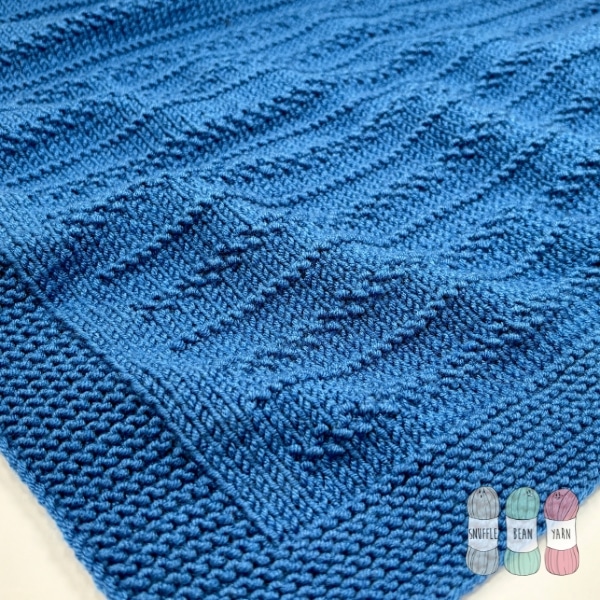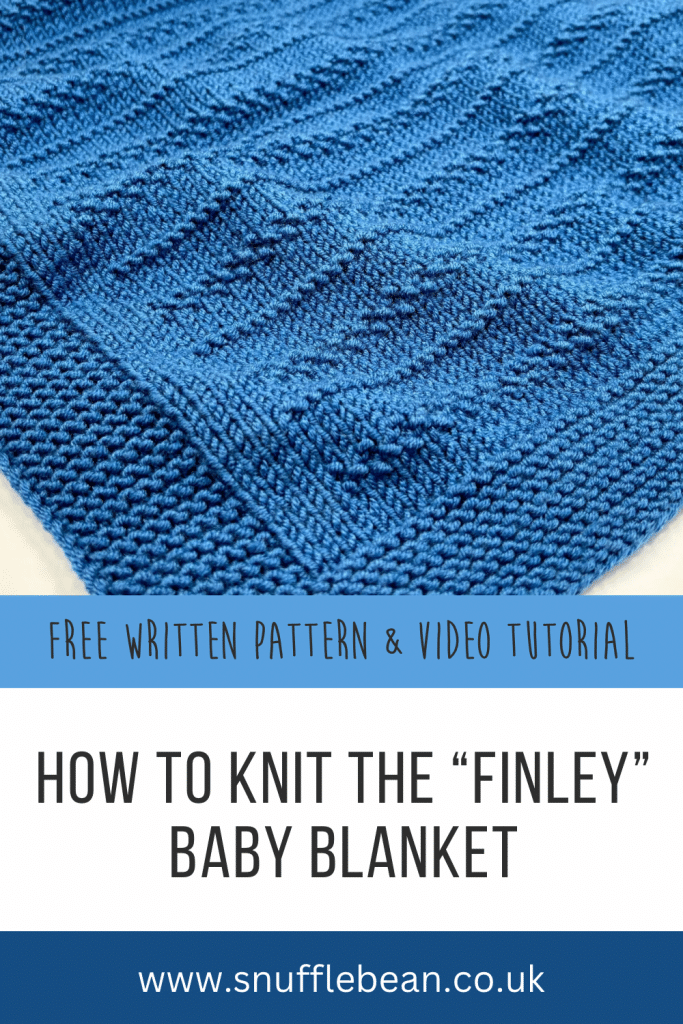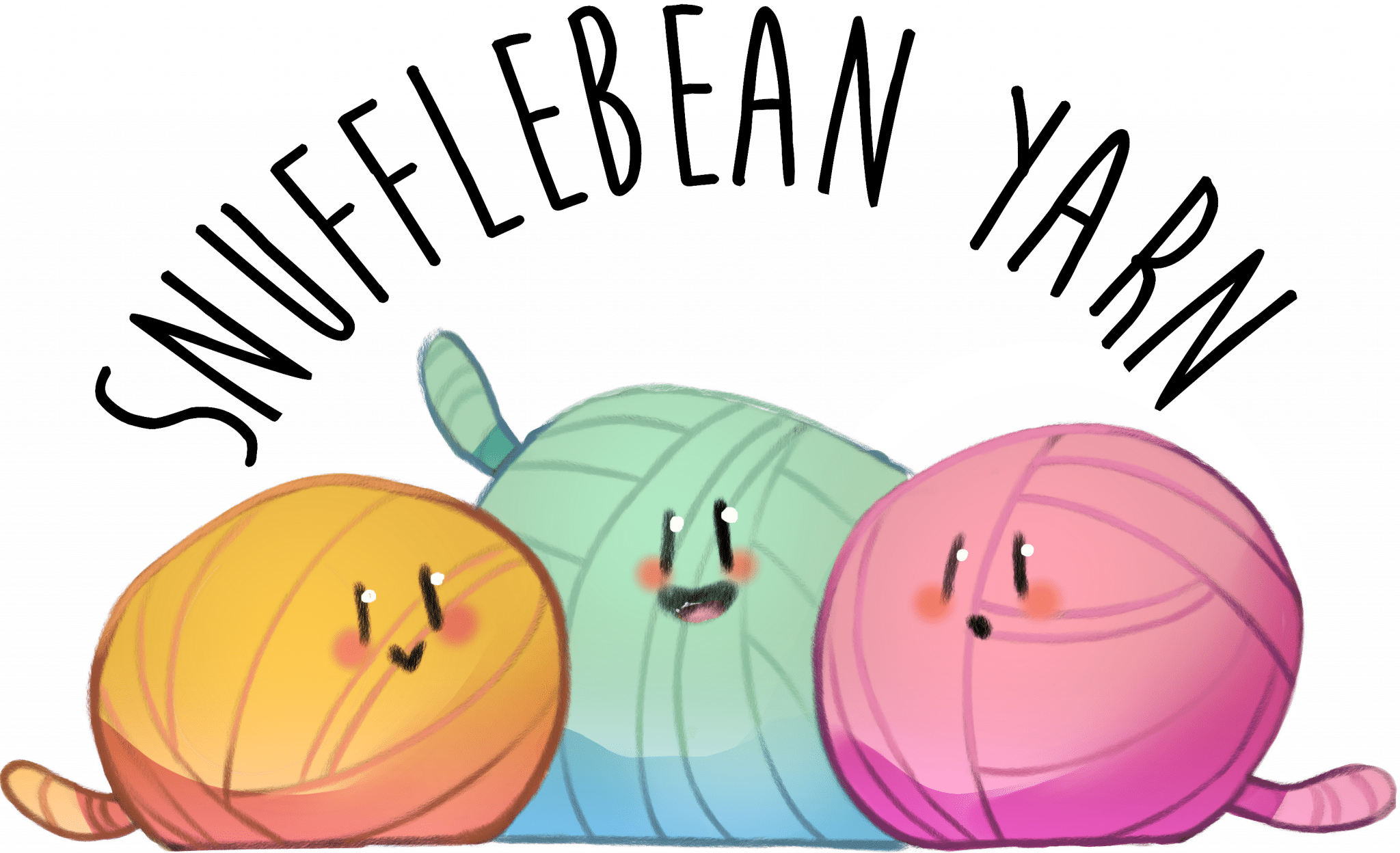How to Knit the “Finley” Baby Blanket [Free Video Tutorial & Written Pattern!]
***You can purchase an INEXPENSIVE AD-FREE PDF of this pattern on Ravelry HERE or Etsy HERE***
The “Finley” Baby Blanket, is in design terms, the younger sibling of my “Toby” Baby Blanket. I had so much fun combining seed stitch, stockinette stitch and purl ridges when knitting Toby, that I wanted to revisit the idea and create something totally different but with that same super textured look.
Finley has a pattern repeat of only 14 rows, short enough for an adventurous beginner to tackle, but also complex enough to keep an experienced knitter busy. I’ve chosen to knit my sample blanket in a deep French Navy Blue but I think this pattern really lends itself to any colour you might want to pick.

yarn and sizing tips & tricks
I’ve chosen to knit my blanket in double-knit yarn (for those of you outside the UK, the equivalent is Light Worsted or 3 weight yam), but this blanket design will work in any weight yarn you choose. Just make sure that you select the right size needles for the yarn you want to work with.
My instructions produce a Blanket approximately 60cm x 80cm, but the beauty of this blanket is there is NO pattern repeat, you just cast on an ODD number of stitches, and off you go. Ideal for when you really don’t want to have to sit and work out how many stitches you need to achieve the perfect size.
pin for later

Materials Needed
- 4mm Circular Needs (to recreate this blanket 100cm is a perfect length)
- 400g of DK Yarn – I used King Cole Cherished in French Navy
- Scissors & Tapestry Needle for sewing in ends
- 2 Stitch Markers
written pattern
Stitches Used
- k – knit
- p – purl
- sl1pwyf – slip one purlwise with yarn in front.
- Pm – place marker
- Sm – slip marker
- WS – Wrong Side
- RS – Right Side
Bottom Edge
Foundation Row: Cast on 133 stitches. (I like to use the Long-Tail method)
Knit 15 rows as follows: K until final stitch, sl1pwyf
Main Pattern Repeat
Row 1 (RS): k9, pm, k until 9 stitches remain, pm, k8, sl1pwyf.
Row 2 (WS): k9, sm, p until next marker, sm, k8, sl1pwyf
Row 3: k9, sm, k until next marker, sm, k8, sl1pwyf
Row 4: k9, sm, p until next marker, sm, k8, sl1pwyf
Row 5: k9, sm, k until next marker, sm, k8, sl1pwyf
Row 6: k9, sm, p4, *k1,p1* repeat from *to* until 4 stitches before next marker, p4, sm, k8, sl1pwyf
Row 7: k9, sm, k5, *p1,k1* repeat from *to* until 4 stitches before next marker, k4, sm, k8, sl1pwyf
Row 8: k9, sm, p4, *k1,p1* repeat from *to* until 4 stitches before next marker, p4, sm, k8, sl1pwyf
Row 9: k9, sm, k until next marker, sm, k8, sl1pwyf
Row 10: k9, sm, p until next marker, sm, k8, sl1pwyf
Row 11: k9, sm, k until next marker, sm, k8, sl1pwyf
Row 12: k9, sm, p until next marker, sm, k8, sl1pwyf
Row 13: k9, sm, k until next marker, sm, k8, sl1pwyf
Row 14: k9, sm, p4, k until 4 stitches before next marker, p4, sm, k8, sl1pwyf
Repeat Rows 1 – 14 16 times in total (slipping markers on Row 1 instead of placing them), and then work Rows 1-13 once more before moving on to top border.
Top Edge
Knit 15 rows as follows: K until final stitch, sl1pwyf.
Final row (Row 16): Cast off knit wise with right side facing.
